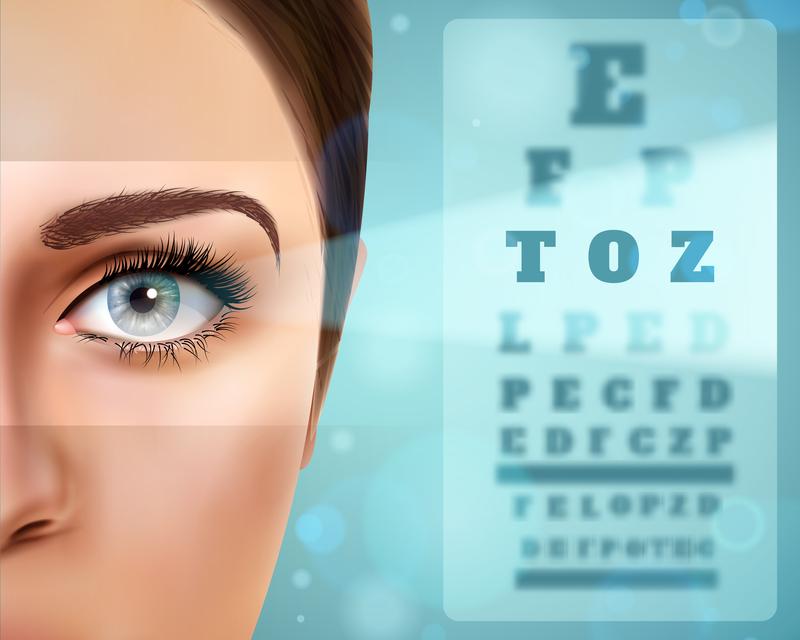We understand getting psyched up for your cataract eye surgery, like any other medical procedure, can be stressful sometimes. With so many types of lenses available, it can be overwhelming to pick one for yourself.
Choosing the right lens depends on several factors, including lifestyle, current vision, health conditions, and refractive errors. In this post, we will discuss the different types of lenses used by our best cataract surgeon in Mumbai and what to consider to decide which lens is right for you.
What is Intraocular Lens (IOL)?
Cataracts develop on our natural eye lenses blocking your vision, and the only way to correct out is through surgery. Cataract surgery involves replacing the cloudy natural lens with an artificial lens called an intraocular lens (IOL). An IOL is a tiny, artificial lens made up of silicon, acrylic, or other plastic material, serving a very similar function to the removed natural lens.
With modern advancements in technology, OILs can be made with different focusing powers, such as contact lenses or prescription spectacles. Careful measurements are taken to determine the dimensions of your eye, known as biometry. IOL can restore vision and correct refractive errors like myopia, hyperopia or presbyopia.
Types of Lenses in Cataract Surgery
There are a variety of IOL types that doctors use in cataract surgery. The best eye dr in Mumbai uses lenses that fit best into patients’ unique conditions. The following are the most common types of lenses used in cataract surgeries:
- Monofocal Lens
Standard or monofocal lenses are designed to provide the best vision but at one particular distance. Monofocal lenses have a singular point of focus, with individual lenses designed for close, medium and distant ranges. If you attempt to look closer or farther than your set distance, your vision may be blurry, and you may need additional assistance to see clearly. These lenses are the most common type of IOLs and also the cheapest.
- Multifocal Lens
Multifocal lenses provide clear vision at multiple distances. These lenses offer maximum visual freedom and are helpful for near, intermediate and farther distances without needing additional glasses. However, it can take more time to get used to and costs more than monofocal lenses.
Multifocal lenses are best if you constantly switch distances during the day, like reading notes, looking at computer screens, then on to presentations, and then driving your car. Of course, you would want to be able to do all this without having to change your glasses every time.
- Toric Lens
A toric lens is designed specifically for people who suffer from astigmatism. Toric IOLs help correct astigmatism as well as shortsightedness and long-sightedness. Multifocal and monofocal lenses can also be toric. Laser eye surgery cost in Mumbai using a toric lens is generally more than a standard lens surgery. Typically, a toric IOL costs more than a standard lens of the same type since it is also one of the other lens types (for example, one might get a multifocal toric IOL).
- Extended Depth of Focus (EDOF)
EDOF lenses are the latest advancement in IOLs that combine the benefits of both monofocal and multifocal lenses, allowing clear vision at both intermediate and farther distances. These lenses work by creating a single yet elongated focal point. As a result, it reduces the risks of halos and glares that come with multifocal lenses.
- Monovision Lens
Monovision is not a type of OIL. Instead, it is a technique that allows good vision at different distances. In this technique, a single vision lens for one distance is implanted in one eye, and a lens for a different distance is implanted into another, correcting problems with short-sightedness and long-sightedness altogether. That means you will be able to see both far and near without having to get used to different focuses of a multifocal lens.
Monovision may seem complicated and hard to adapt to, but most patients are able to adapt to this visual technique in shorter spans of time. However, not all patients are able to adapt to monovision completely, so you may need to try these using contact lenses.
Choosing the Right Cataract Lens
Some health, lifestyle and budget factors may go into determining the right lens. Your cornea specialist in Mumbai is the best person to help you choose the right lens based on your unique situation. We hope this guide has led your way to an informed decision; however, a thorough discussion with your ophthalmologist is the critical first step. Get in touch with us today to book an appointment and get your questions answered.
